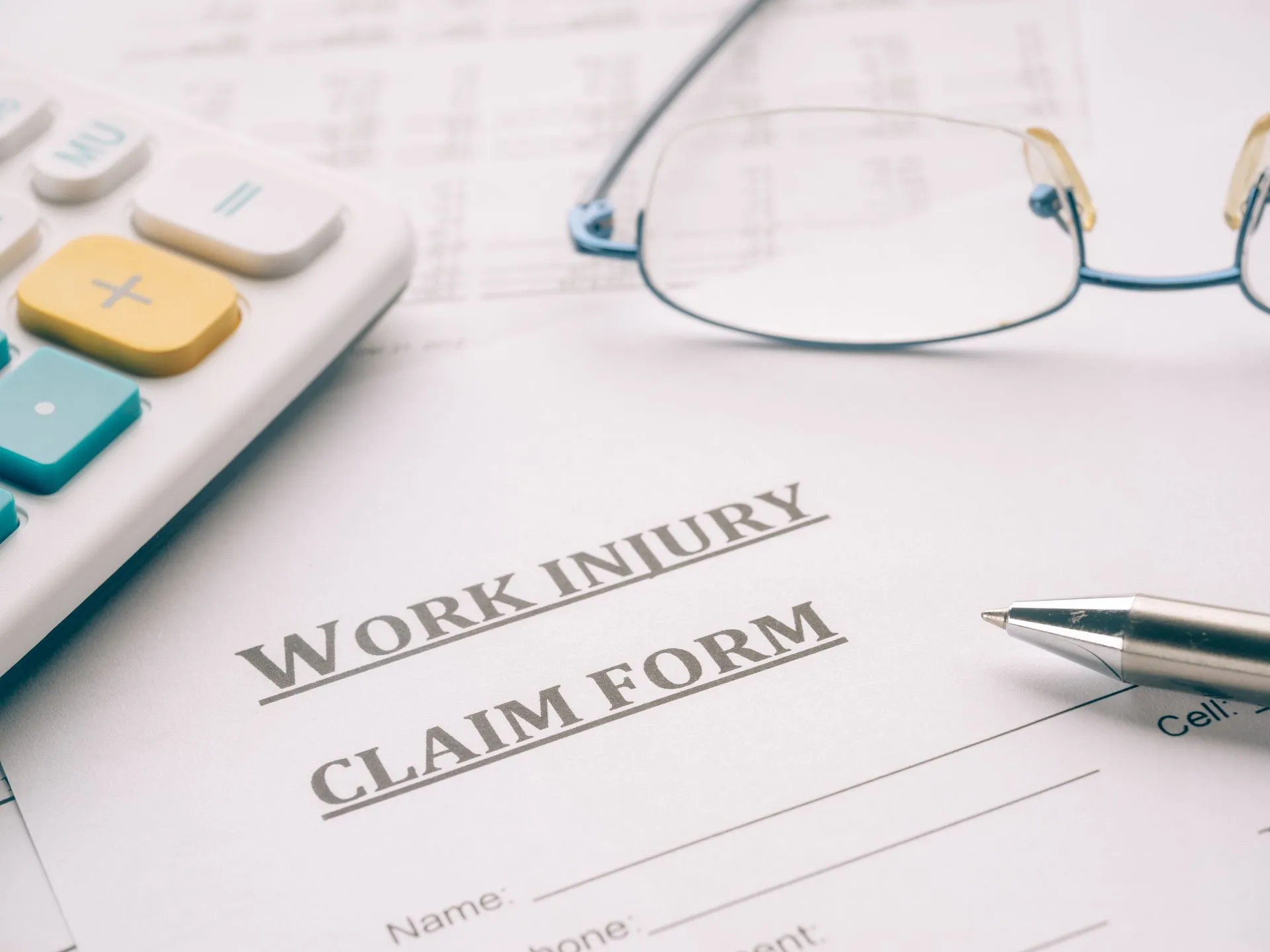
Yes. When filing an insurance claim, first and third-party personal injury claims are two completely different avenues, although they’re not mutually exclusive. You can pursue compensation from:
- Your insurance provider with a first-party claim
- Another individual’s insurance provider if they’re responsible for your damages through a third-party claim
- Both to increase your chances of receiving the compensation you need
Our attorneys will advise you on strategies to maximize your compensation and execute them with aggressive and experienced legal representation.
Types of First-Party Injury Claims
Health Insurance Claims
You file a first-party claim with your health insurance to cover your medical bills. After an accident, most turn to their own health insurance first to get the immediate care they require to begin recovering. No legal action is necessary for this type of claim (at least not initially).
Property Insurance Claims
You file a first-party claim with your homeowners’ (or renters’) insurance in the event of an accident or disaster that damages your party, such as a fire, flood or burglary. In these cases, there’s rarely an identifiable third party you could file against to secure the compensation you need, making the success of your first-party claim essential.
There are sometimes scenarios where homeowners need to get lawyers involved in property damage claims that are wrongfully denied or undervalued, but in many cases, homeowners can work directly with their insurer to reach an acceptable outcome.
Auto Insurance Claims
If you only have the minimum required coverage in Ohio (bodily injury and property damage liability), you typically cannot file a first-party claim. However, you should still notify your insurance company as they will need to investigate the crash and attempt to prove you weren’t at fault (after all, they don’t want to pay the other driver’s third-party claim if they can avoid it). If you’re not at fault, your insurance company may be able to help you pursue a third-party claim against the other driver.
You could pursue a first-party auto accident claim if you have uninsured motorist coverage and you’re struck by an uninsured driver. You would also be able to file a first-party claim if you have comprehensive coverage. Your insurance would pay out up to your policy limit, even if you were at fault for the crash (unless there are applicable policy exclusions that would prevent you from being compensated).
First-Party Injury Claim Pros and Cons
A first-party injury claim often resolves faster than third-party claims since you’re dealing directly with your own insurance company. It can often offer quicker access to compensation to cover immediate needs, such as medical bills or repair costs, and provide a guaranteed safety net for financial support in covered situations.
However, while your insurance can provide guaranteed coverage for named perils, you will be subject to policy coverage limits with some policies that restrict how much you can receive, which can be challenging if you’ve sustained a severe or catastrophic injury that requires ongoing care.
First-party claims, like a normal health insurance claim, typically don’t provide compensation for non-economic damages such as pain and suffering. There are also scenarios where claims can cause your insurance premiums to rise, or result in policy non-renewal in the future, making your coverage more expensive. smoke detector, lawn equipment or seatbelt
Types of Third-Party Injury Claims
- Auto Accident Liability Claims: You can file a third-party claim against another driver’s auto insurance if they’re at fault. While your own health insurance can cover immediate care costs (after your deductible), it won’t pay for things like pain and suffering or lost wages. A third-party claim allows you to pursue full compensation to cover all aspects of your losses, from the physical and psychological to the financial consequences.
- Premises Liability Claims: You can file a third-party claim against a property owner’s homeowners or commercial property insurance if someone else’s negligent property management caused you to slip and fall, whether due to wet floors, inadequate lighting or any other hazard.
- Product Liability Claims: You can file a third-party claim against a manufacturer’s liability insurance to seek compensation in the event you’re injured by a defective product, such as a smoke detector, lawn equipment or seatbelt.
Third-Party Injury Claim Pros and Cons
One of the most significant benefits of a third-party claim is the potential for receiving a larger settlement than you could with just a first-party claim, which can help you cover the totality of your losses. This includes reimbursement for damages not available in many first-party claims, including lost wages and non-economic damages like pain and suffering.
That said, the process to secure a settlement offer can quickly become complicated, often involving lengthy and intricate legal proceedings that can take longer to resolve compared to a first-party claim.
Unlike first-party claims, your compensation hinges on your ability to prove the other party’s liability. Failure to do so could leave you without compensation.
The attorneys at the Buckeye Law Group will fight for your right to proper compensation. We’ll gather extensive evidence and witness testimony to build a persuasive narrative that increases your chances of securing the compensation you deserve.
Hire Skilled Ohio Personal Injury Attorneys Who Will Help Develop a Strategy for Maximum Compensation
At the Buckeye Law Group, we provide zealous legal representation that never quits. Our attorneys have extensive experience handling both first and third-party injury claims in all types of injury cases and will work hard to get you maximum compensation.
Let us take the legal battle for proper compensation off your shoulders. Call 1-800-411-PAIN or complete our online contact form to schedule a free consultation with one of our attorneys today.
Legal Steps for Families of Railroad Accident Victims
When Tragedy Strikes on the Tracks Railroad accidents are rare, but when they occur, they often result in catastrophic injuries or death. Families of victims are left grieving—and facing a
The Role of Speed Limits in Reducing Pedestrian Injuries
Why Speed Limits Matter More Than You Think Speed limits are not arbitrary—they are critical safety measures based on road design, pedestrian traffic, and historical accident data. For pedestrians, the
Surgical Errors: When the Operating Room Becomes a Legal Battlefield
Surgery Should Heal—Not Harm Every surgery carries risk, but some outcomes are simply unacceptable. Surgical errors—often the result of negligence—can leave patients with lifelong complications or even result in wrongful
Radiology Errors: The Hidden Danger Behind Medical Misdiagnoses
Why Radiology Accuracy Is Essential to Your Health Radiology is one of the most powerful diagnostic tools in modern medicine—but when errors happen, the consequences can be life-altering. From cancer
Motorcycle Accidents in Ohio: Protecting Riders After Serious Crashes
Injured While Riding? Here’s What You Need to Know Motorcycle riders are some of the most vulnerable people on Ohio roads. Without the frame of a car to protect them,
What to Do After a Drunk Driving Accident in Ohio
Hurt by a Drunk Driver? Know Your Rights and Legal Options Drunk driving accidents can change lives in a matter of seconds. One moment you’re safely driving home, and the
Gastric Bypass Malpractice: When Weight Loss Surgery Goes Wrong
Gastric bypass surgery has become an increasingly common procedure for individuals struggling with obesity and its associated health risks. While many patients undergo this surgery successfully and experience life-changing benefits,
Spinal Cord Injury: Understanding the Medical and Legal Consequences
Spinal cord injuries (SCIs) are among the most devastating physical traumas a person can endure. Often the result of serious accidents, these injuries can lead to a lifetime of pain,
The Importance of Sobriety Checkpoints in Preventing Accidents
Drunk driving continues to be a leading cause of fatal traffic accidents in the United States. Despite public awareness campaigns and strict laws, thousands of lives are still lost every
Understanding the Legal Consequences of Distracted Driving
Distracted driving is one of the most dangerous behaviors on the road today. Whether it’s sending a text, adjusting a GPS, or even eating while driving, taking your eyes or
